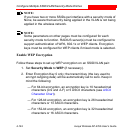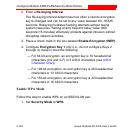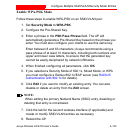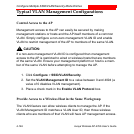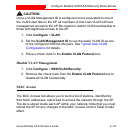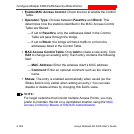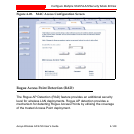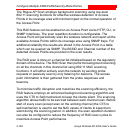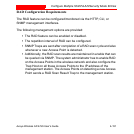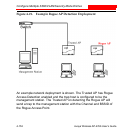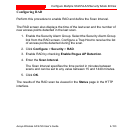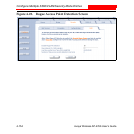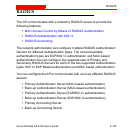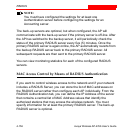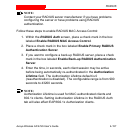
Configure Multiple SSID/VLAN/Security Mode Entries
4-150 Avaya Wireless AP-4/5/6 User’s Guide
The Rogue AP Scan employs background scanning using low-level
802.11 scanning functions for effective wireless detection of Access
Points in its coverage area with minimal impact on the normal operation of
the Access Point.
This RAD feature can be enabled on an Access Point via its HTTP, CLI, or
SNMP Interfaces. The scan repetition duration is configurable. The
Access Point will periodically scan the wireless network and report all the
available Access Points within its coverage area using SNMP traps. For
additional reliability the results are stored in the Access Point in a table,
which can be queried via SNMP. The BSSID and Channel number of the
detected Access Points are provided in the scan results.
The RAD scan is done on a channel list initialized based on the regulatory
domain of the device. The RAD Scan then performs background scanning
on all the channels in this channel list using 802.11 MAC scanning
functions. It will either actively scan the network by sending probe
requests or passively scan by only listening for beacons. The access
point information is then gathered from the probe responses and
beacons.
To minimize traffic disruption and maximize the scanning efficiency, the
RAD feature employs an enhanced background-scanning algorithm and
uses the CTS to Self mechanism to keep the clients silent. The scanning
algorithm allows traffic to be serviced between each channel scan. Before
start of every scan (except scan on the working channel) the CTS to
self-mechanism is used to set the NAV values of clients to keep them
silent during the scanning period. In addition, the scan repetition duration
can also be configured to reduce the frequency of RAD scan cycles to
maximize Access Point performance.



